Most of us know clematis as climbing plants with large showy flowers. But in fact, among the 320-odd species, these are a minority. Late-flowering species clematis are usually, but not always, climbing, sometimes sprawling over rocks, or forming bushes in deserts, or growing alongside grasses in meadows. Some are very vigorous, clambering over trees or rocks to reach the light, their roots usually deep in the cooler and moister levels of the soil. Others are relatively small and can be grown in containers, which makes them useful for town gardens.
Very few, however, are showy, and you need to give careful thought to placing them – you’ll want to get up close to be able to appreciate their subtle colours, and intriguing shapes and textures of their flowers – not to mention the scents some have. Many of these species flower relatively late – from midsummer, off and on, into early autumn – which is perhaps one reason they are getting increasing attention from nurseries and gardeners.
The best known of the later-flowering clematis are the ‘lemon-peel’ species: Clematis orientalis and Clematis tangutica. Both are an excellent introduction to the very large number of late-flowering species, and illustrate well one of the additional advantages of these later- flowered kinds – their spherical fluffy seedheads, produced profusely from September onwards. A big Clematis orientalis, with several thousand silvery heads, illuminated by low winter sun, can be a spectacular sight.
There are many more late-flowering clematis to discover. I would specifically like to mention the up-and-coming Clematis viorna group, a few of which are pictured here and are something of a cult in the USA, with more becoming available in the UK. With their intriguing flask-shaped blooms and wide, often subtle, colour range, these clematis (known as ‘leather flowers’) offer an enticing prospect, especially for small spaces.
With their tiny flower heads and sometimes unusual colours, these late-flowering clematis have lots of appeal, and show that when it comes to climbing flowers, bigger isn’t necessarily more beautiful.
How to grow late flowering clematis
Site and soil
Having seen several species in the wild growing in the most appalling ground, I am not inclined to worry about soil conditions, except to stress that late flowering clematis do all need good drainage. All will need sunlight for at least half the day. The majority will cope with high summer temperatures but go into dormancy if their roots run dry. Hardiness is not a problem for the species in cultivation. The yellow ‘lemon-peel’ varieties establish quickly, but some others may be slower.
Pruning late flowering clematis
Nearly all late flowering clematis flower on the current season’s growth and are in Clematis pruning group 3. They can be pruned in late winter or early spring. Pruning can be as hard as it needs to be, which allows potentially large-growing plants to be kept to much smaller sizes, or at the other extreme, in a wilder planting, they need not be pruned at all and can be allowed to run rampant.
But be warned: clematis growth is often wayward and always very brittle, so you may find when you set out to tidy up an older plant that what starts as a light prune can often turn into something more serious, leaving a growing pile of tangled debris at the bottom of the ladder.
Plants on house walls are best cut back annually to a framework of permanent stout stems. Clematis will need both horizontal and vertical support to climb a wall or fence. Wooden trellises are readily available, but you can create your own by attaching wires to walls using vine eyes. Whatever you use, each element should be no more than 20cm apart, and preferably closer lower down.
Read our guide to pruning clematis.
What to grow with late flowering clematis
One of the great boons of climbers is that it is often possible to grow several together, allowing for an easy succession of flower throughout the year. The clematis mentioned here, for example, can be allowed to scramble up alongside wisteria, early flowering Clematis montana or roses, to provide colour later in the year. The main issue is that different climbers may have varying pruning requirements, so, for example, giving younger wisteria plants the ruthless cut-back they need in summer may result in a lot of damage to the clematis. The best strategy is perhaps to plant clematis only around old and well-established wisteria and roses.
As clematis age on high walls, more of their flowers will be higher up (one reason to prune), although this provides an opportunity to plant other shorter-growing plants below, such as the early flowering C. alpina and C. macropetala, or other small-growing species, such as C. viorna types.
15 of the best late-flowering clematis to grow
1
Clematis tangutica
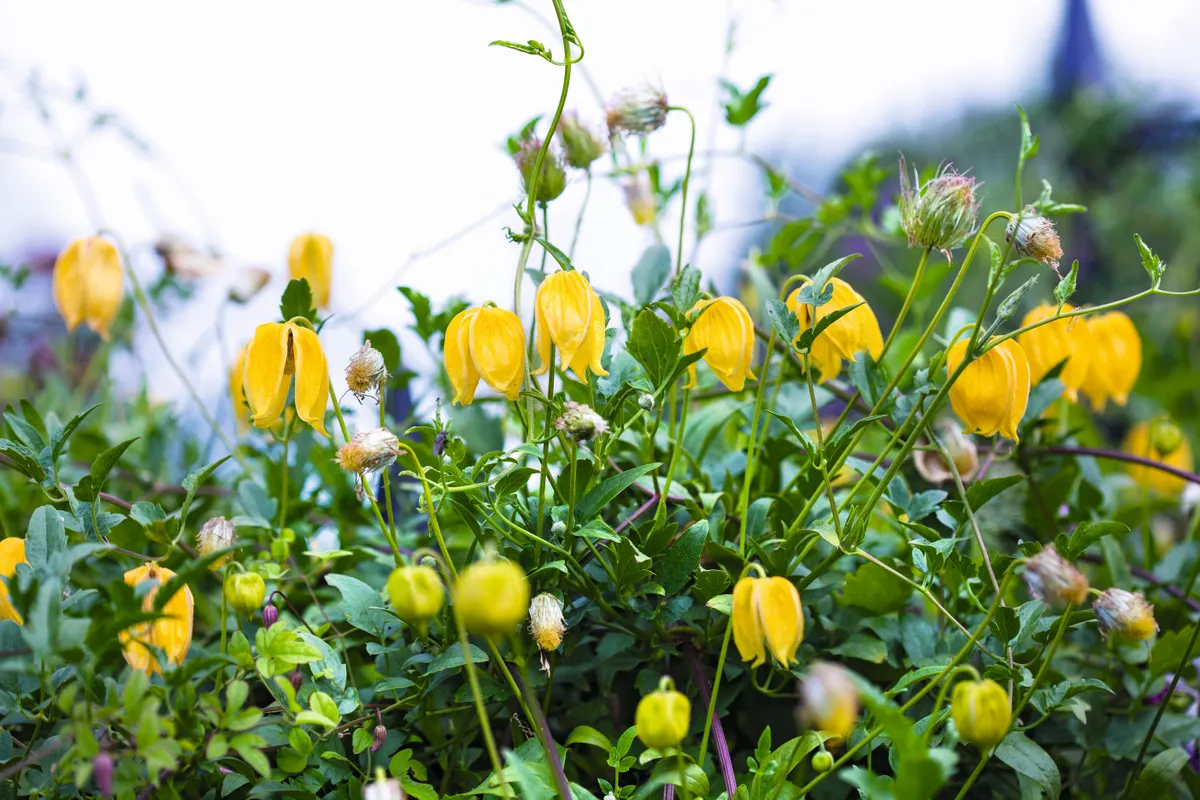
Named for the Tangut region of Tibet, this plant is found over a wide area, in many different kinds of terrain. Its yellow, lantern-shaped flowers are followed by charming, fluffy seed heads. Height: 4.5m. RHS H7, USDA 3a-8b.
2
Clematis texensis
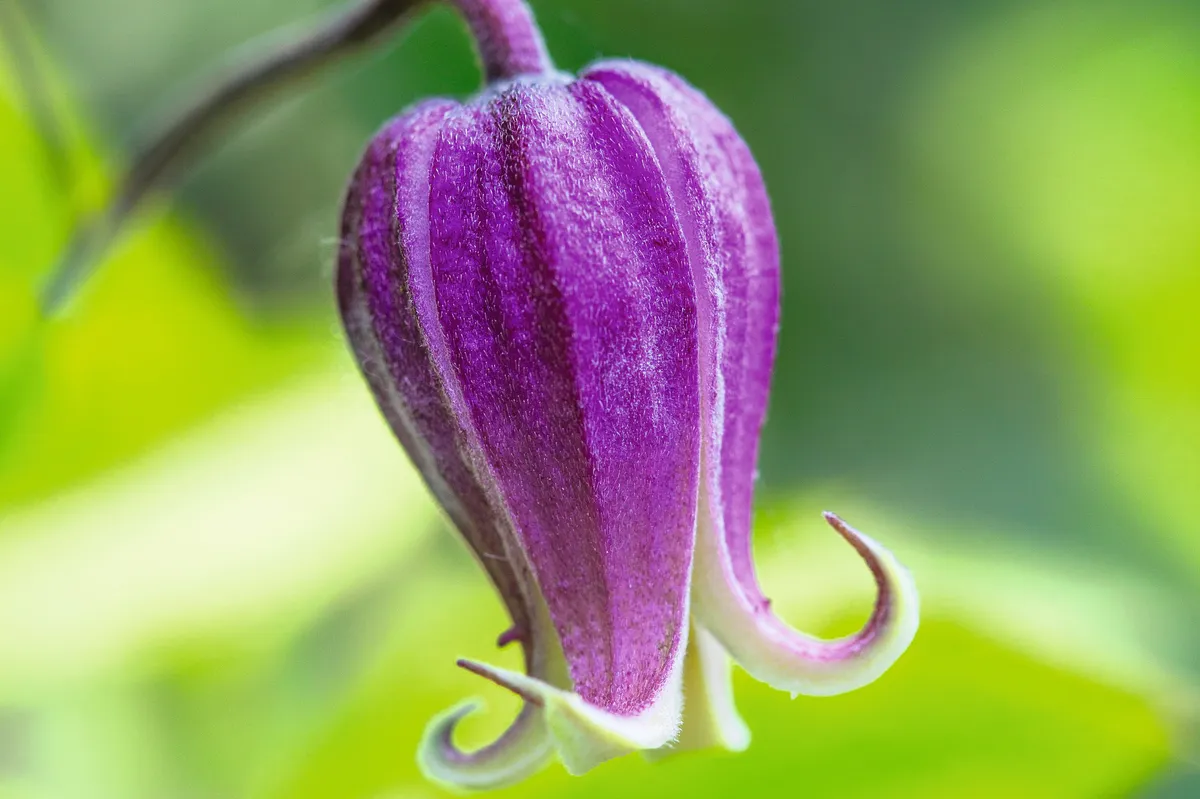
This species forms the basis for many new and showy hybrids, mostly noted for their vivid flowers, often in red with creamy inners. Texensis clematis are herbaceous, so need cutting back. Height: 1.8m. USDA 4a-8b.
3
Clematis fusca
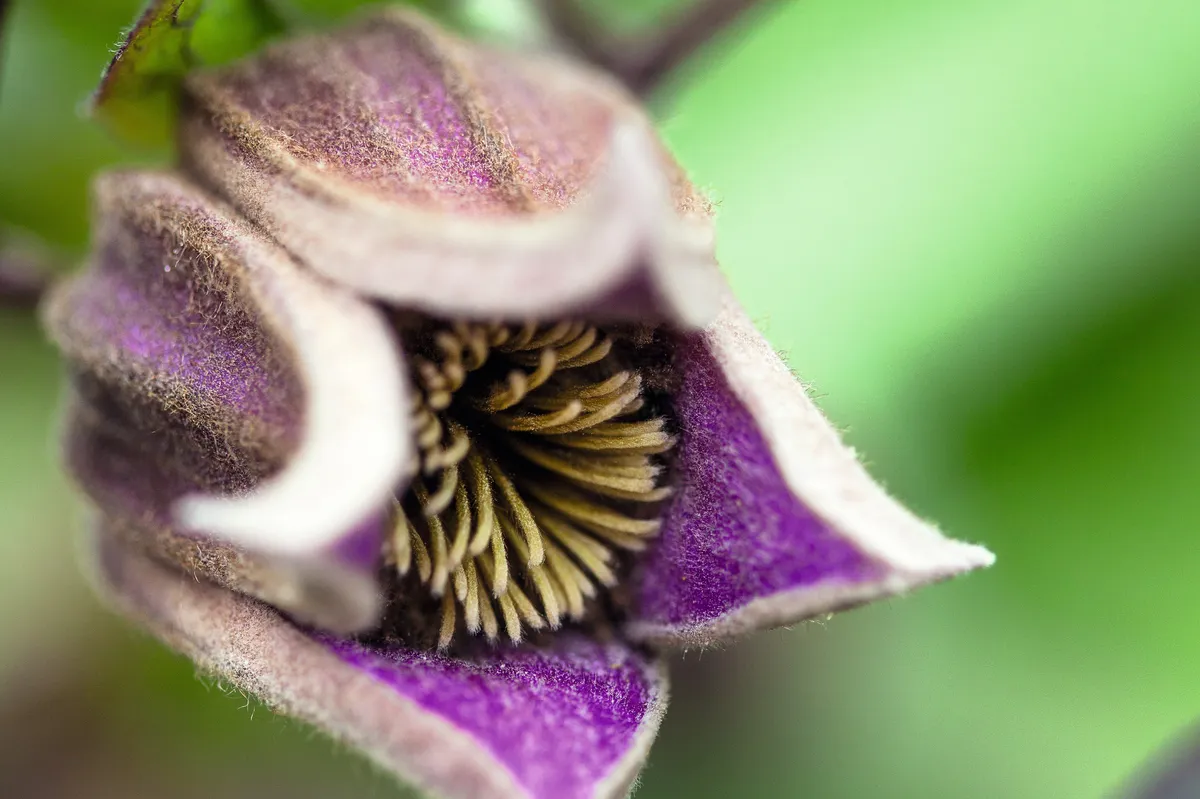
Dark leaves and flowers, which look almost as though they're made of felt, give this plant a subtle, somewhat sombre charm. A good clematis to let ramble through a shrub. Best in a sheltered spot with good drainage. Height: 2m.
4
Clematis versicolor
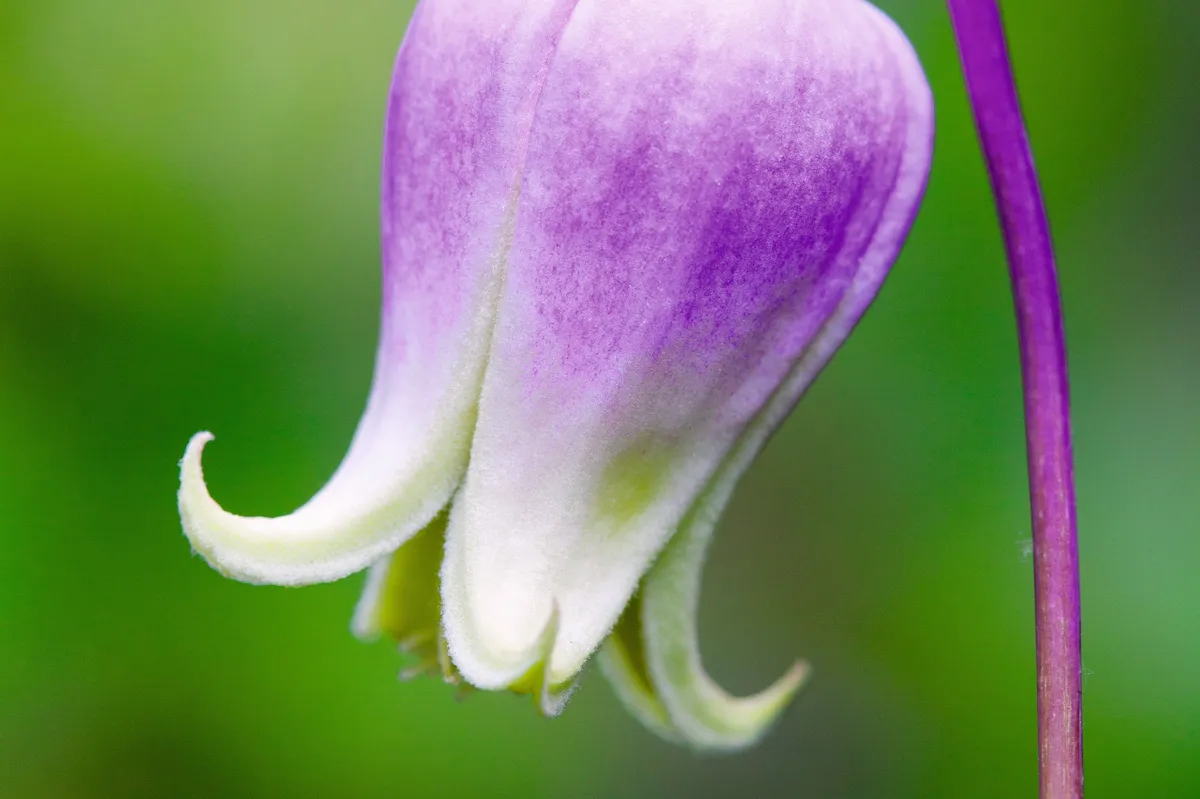
This lovely North American native, one of the C. viorna group, can flower from late spring right through to late summer, early autumn. Its light habit means it is good for growing over shrubs. Height: 2.5m. USDA 5b-9a.
5
Clematis 'Sonnette'
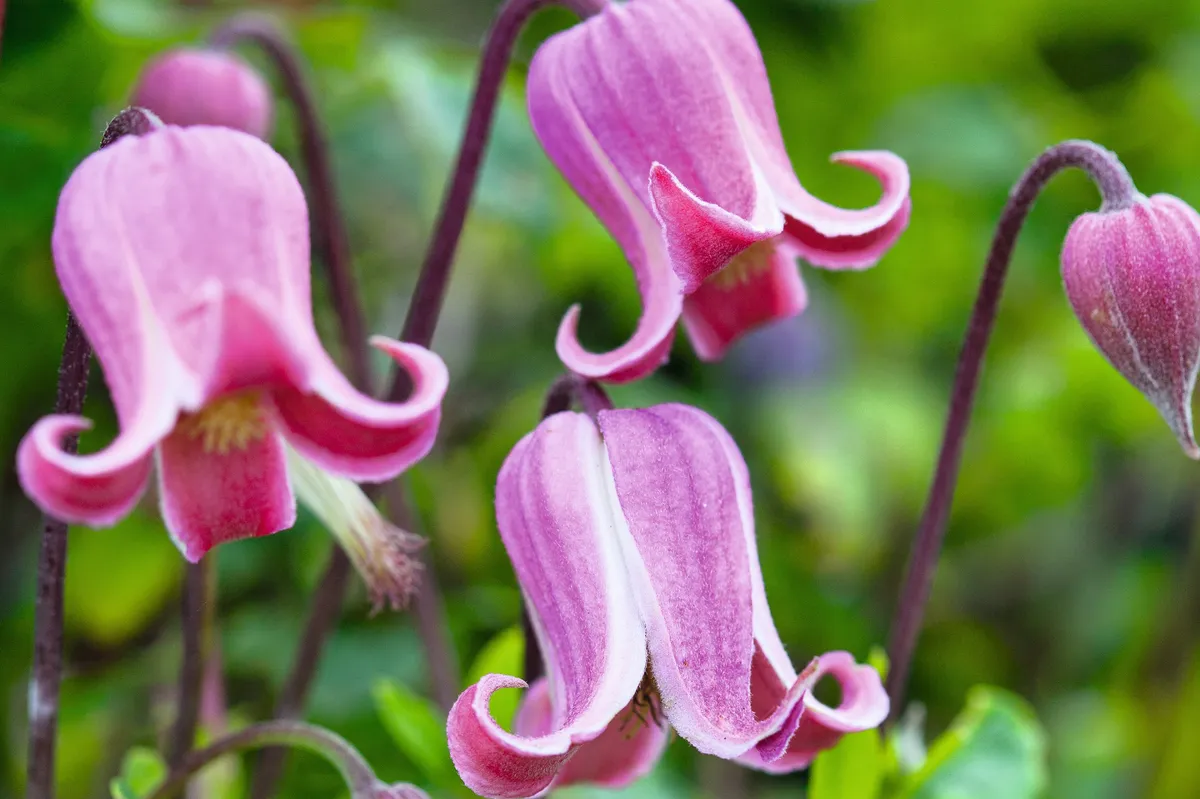
A pretty British cultivar that is derived from the uber-cool North American C.viorna. It is extremely free-flowering but luckily doesn't grow too large. It does, however, need hard pruning. Height: 90cm-2m. RHS H7, USDA 5a-10a.
6
Clematis 'Buckland Beauty'
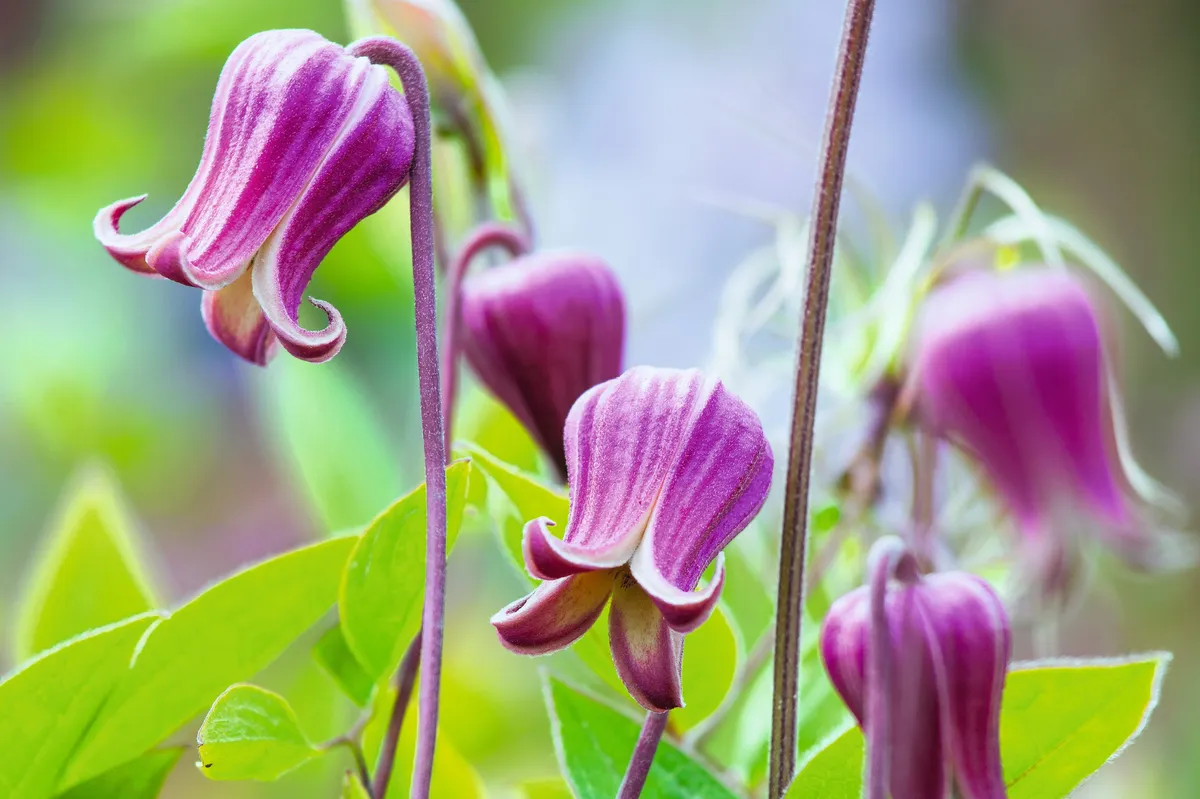
Bearing little mauve flowers that are pale yellow on the inside, this viorna clematis is small enough to grow in a container. Flowers over several months in summer. Prefers a warm spot; herbaceous, so best pruned back to base annually. Height: 1.8-3m. RHS H7, USDA 4a-9b.
7
Clematis Princess Kate (='Zoprika')
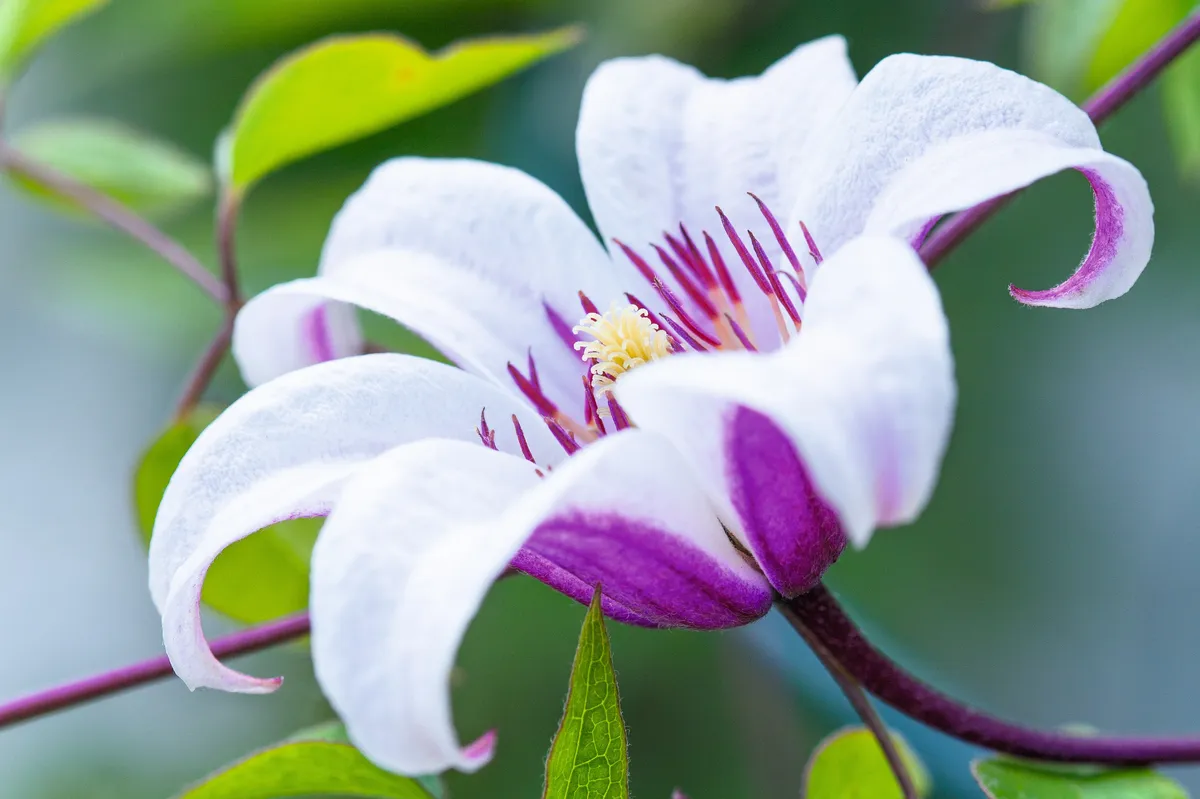
Normally, this clematis group has bell-shaped flowers, but this has white flowers with red-pink backs that flare open to about 5cm wide. Dies back to ground level in winter.
Height: 3.5m. RHS H7. USDA 6a-9b.
8
Clematis 'Fukuzono'
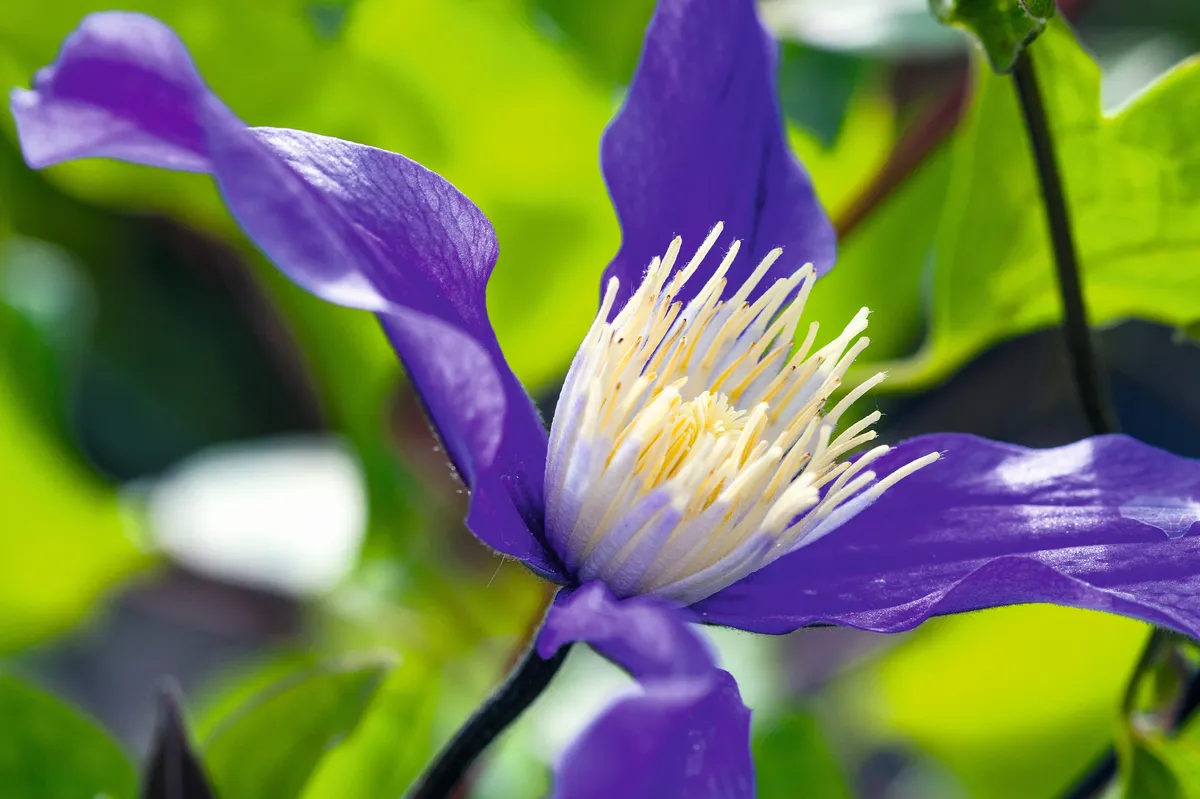
A small, non-clinging plant with lovely fresh foliage. Its open blue-purple flowers are larger than many late bloomers, and are produced over a long season. Its name is Japanese for 'happiness-garden'. Height: 1.5m.
9
Clematis Twinkle (='Zotwi')
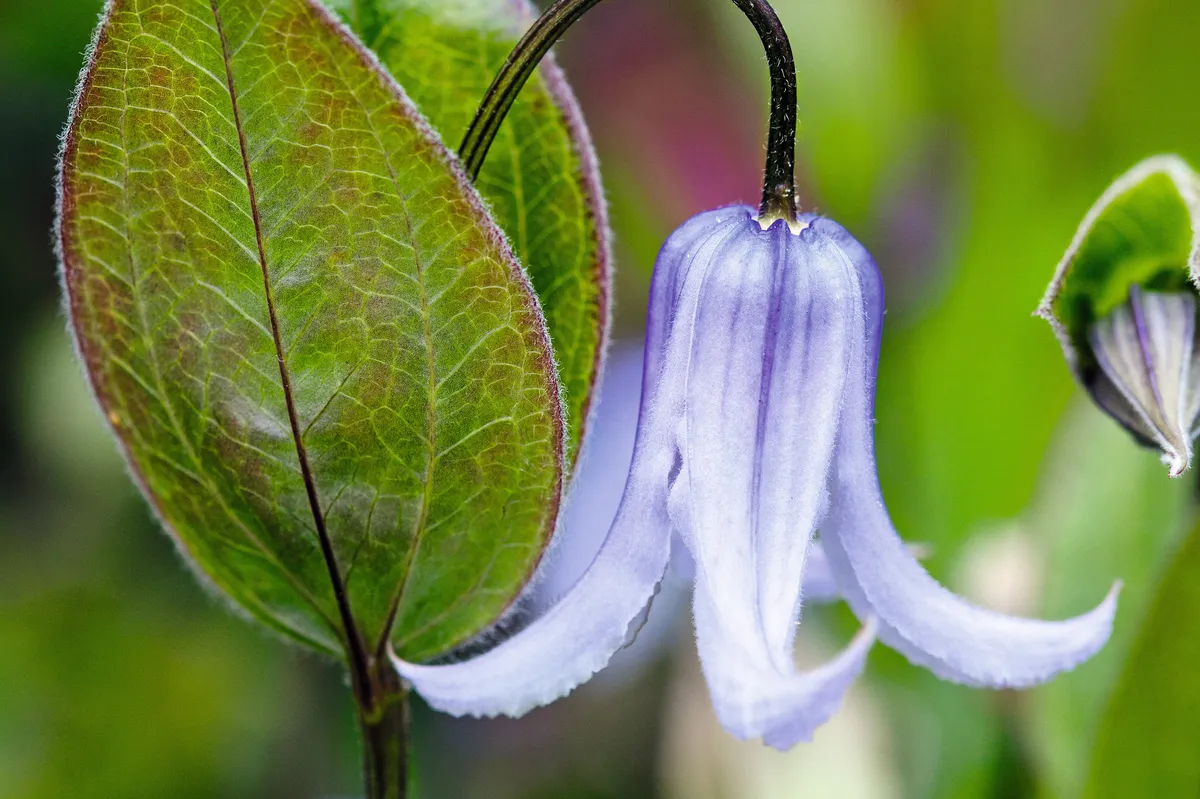
This is one of the 'integrifolia' group of clematis, which means that it does not climb, but behaves more like a perennial, without any need for support. It is sweetly scented. Height: 1m. RHS H7.
10
Clematis tubulosa 'Wyevale'
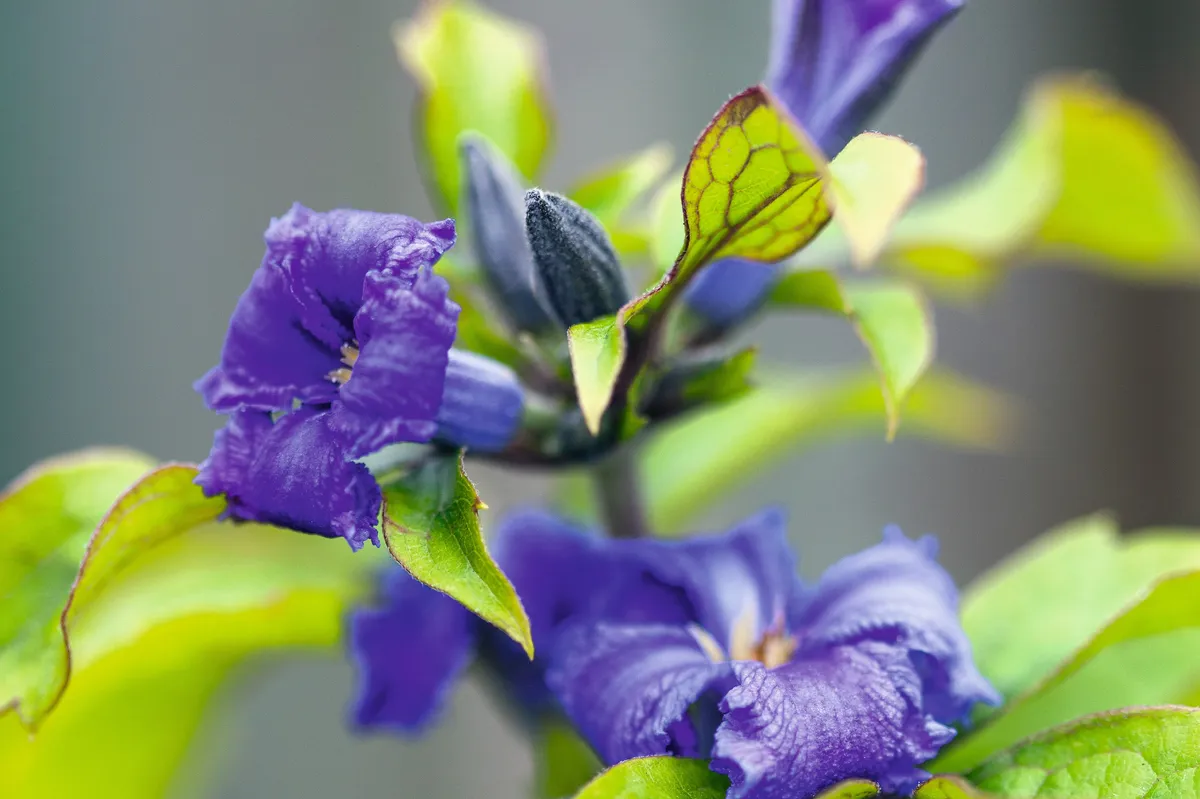
Another non-climbing species with no need for support. Its exquisitely scented flowers are produced in midsummer, with a few later on. Looks good with the first Japanese anemones or Tricyrtis. Height: 1m. RHS H7, USDA 5a-9b.
11
Clematis rehderiana
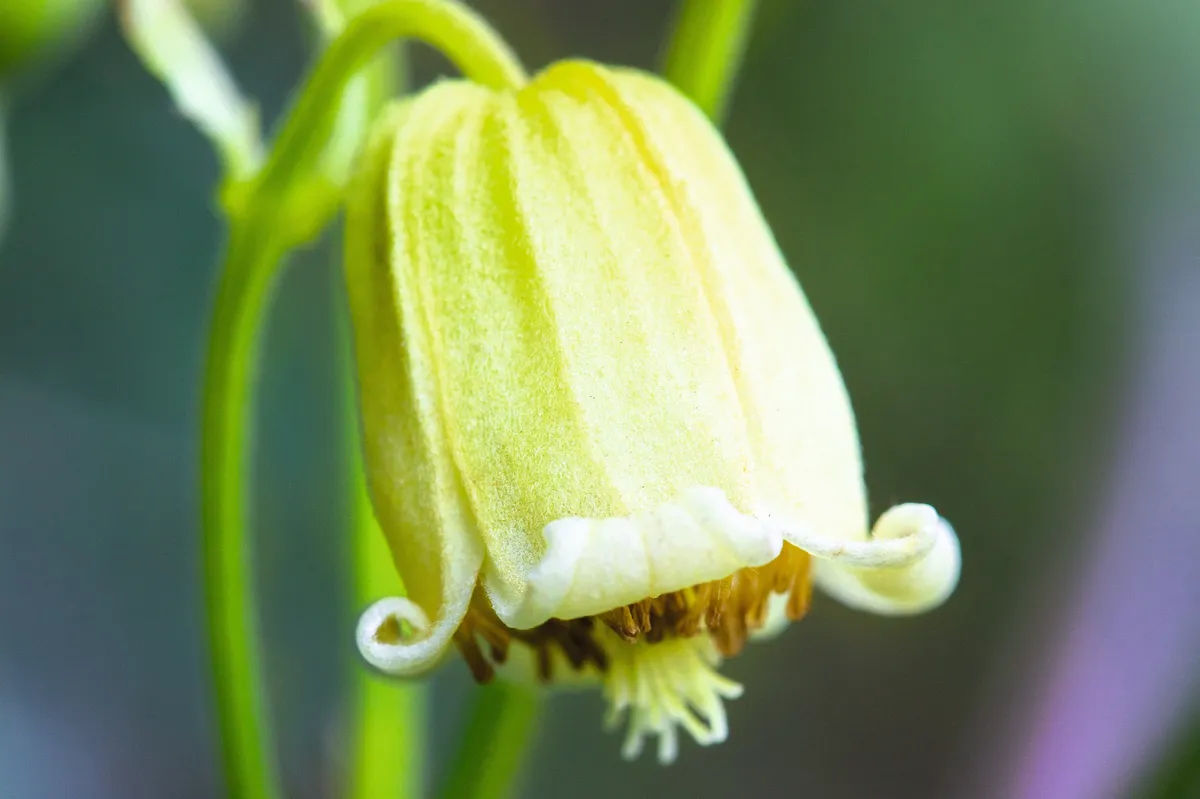
Tiny, sweetly scented flowers are produced in large quantities in mid to late summer. Vigorous, it will eventually reach quite a height, but can be kept small with an annual hard prune. Height: 7m. RHS H6, USDA 6a-9b.
12
Clematis 'Pamela'
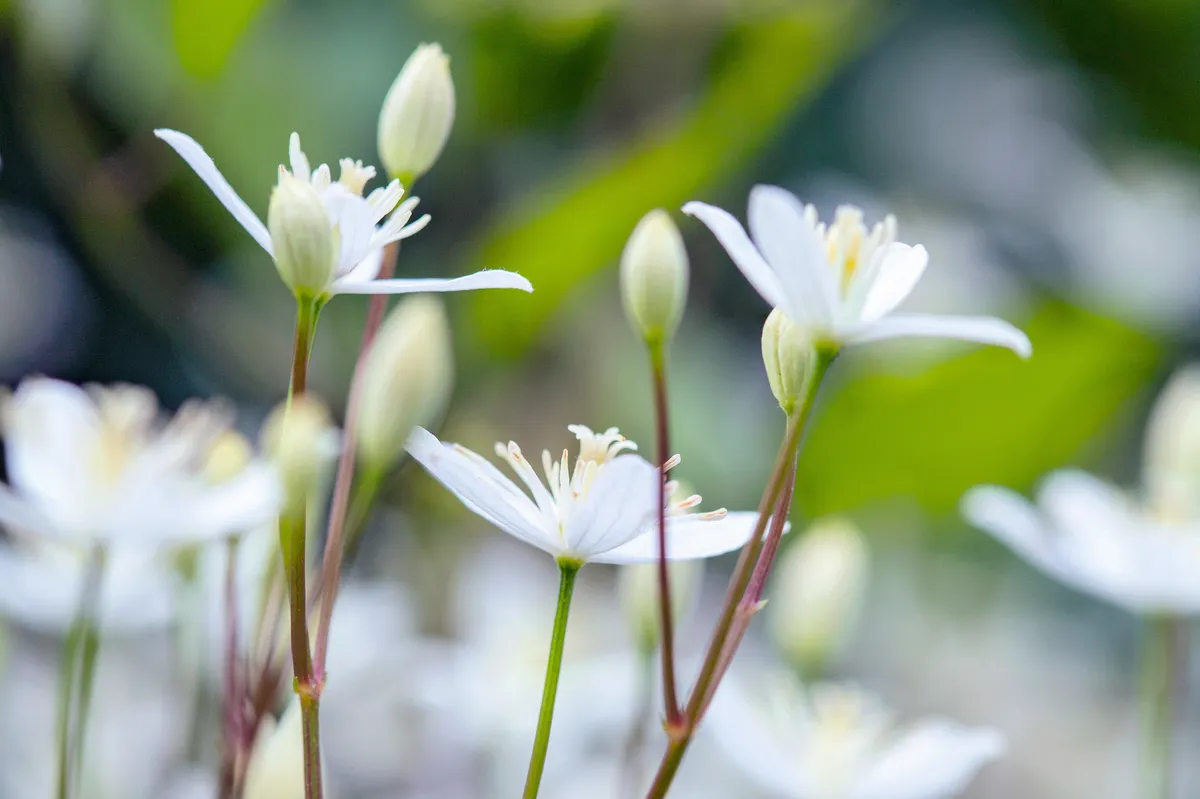
Bred in Canada, this is another non-climbing, sprawling cultivar. It is best grown through large perennials or into a shrub. Masses of scented flowers are produced throughout the summer. Height: 2m. RHS H7.
13
Clematis 'Sweet Scentsation'
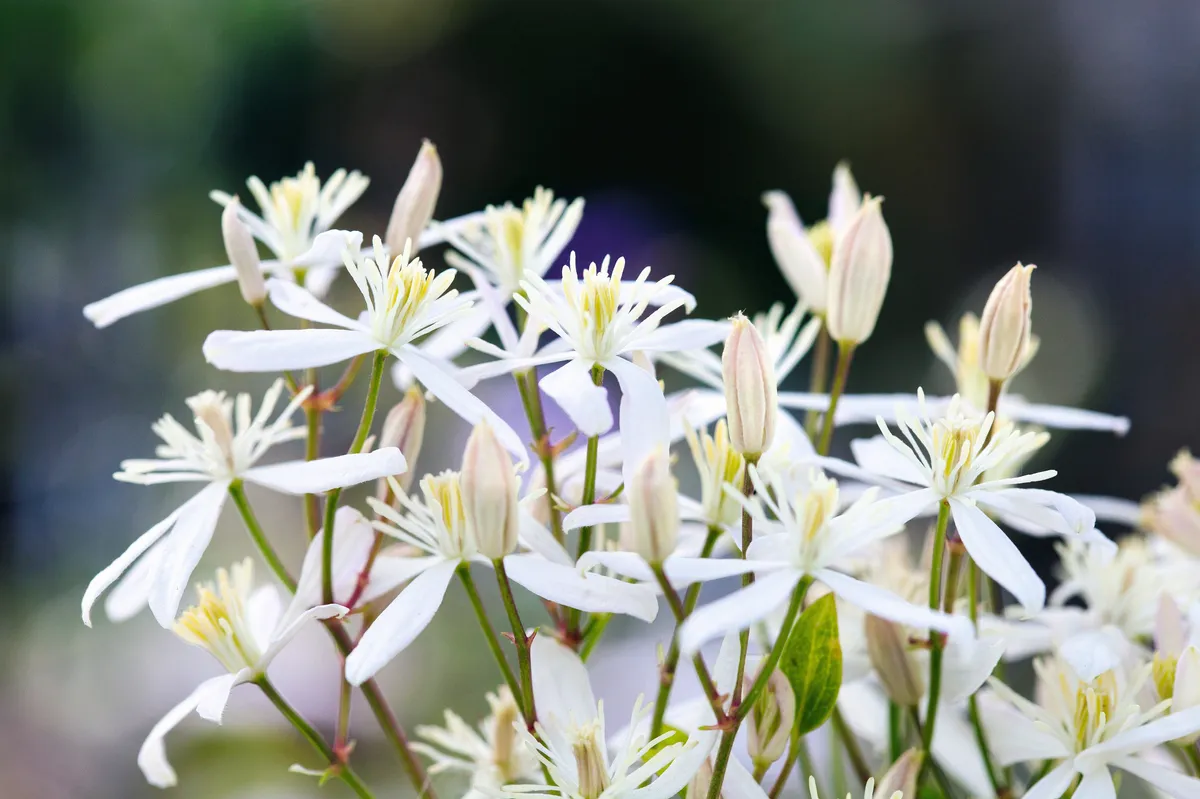
Producing a profusion of small, scented flowers throughout the summer, this plant grows to a medium height. It's a new cultivar, of rather mysterious origin, that needs a hard annual prune. Height: 2.5m. RHS H7.
14
Clematis 'Kaiu'
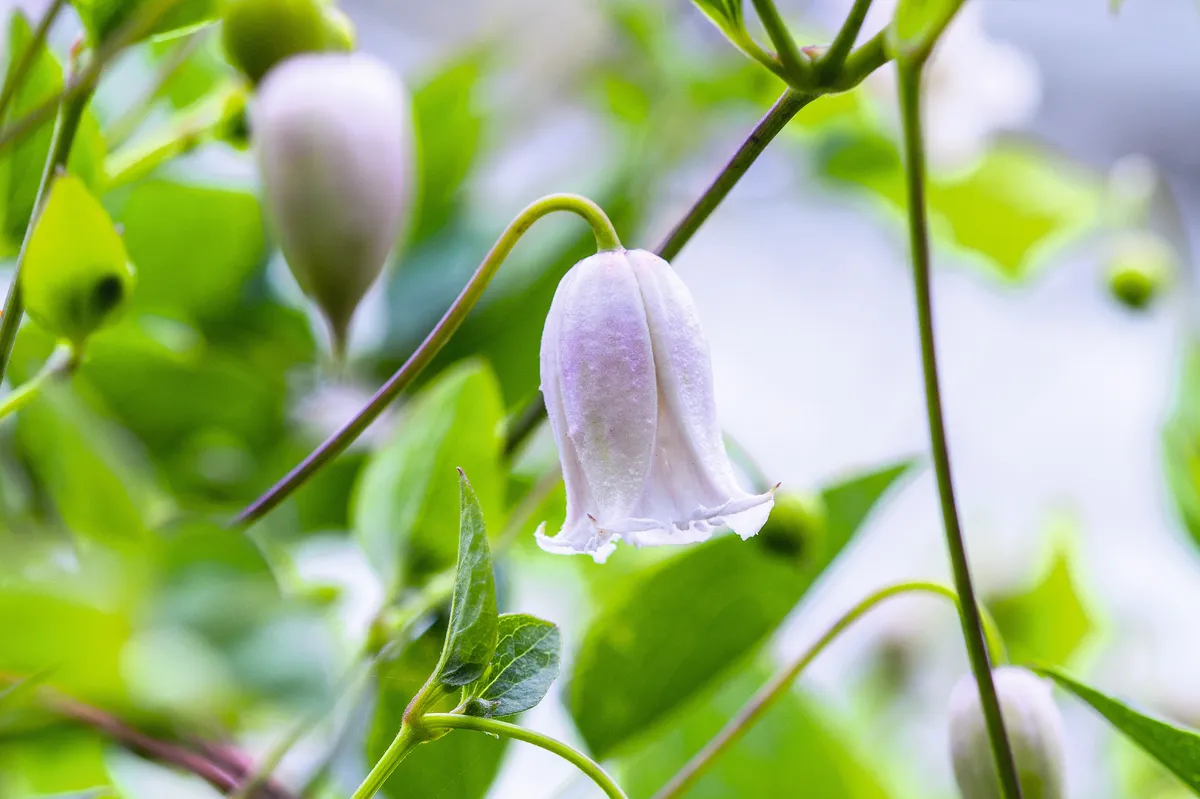
This cultivar, bred from C. viticella, was raised in the cool climes of Kaiu in Estonia, so is pretty hardy. Its small, nodding flowers open to a very pale purple but fade to a creamy white. Needs hard pruning. Height: 2m. RHS H7.
15
Clematis 'Paul Farges'
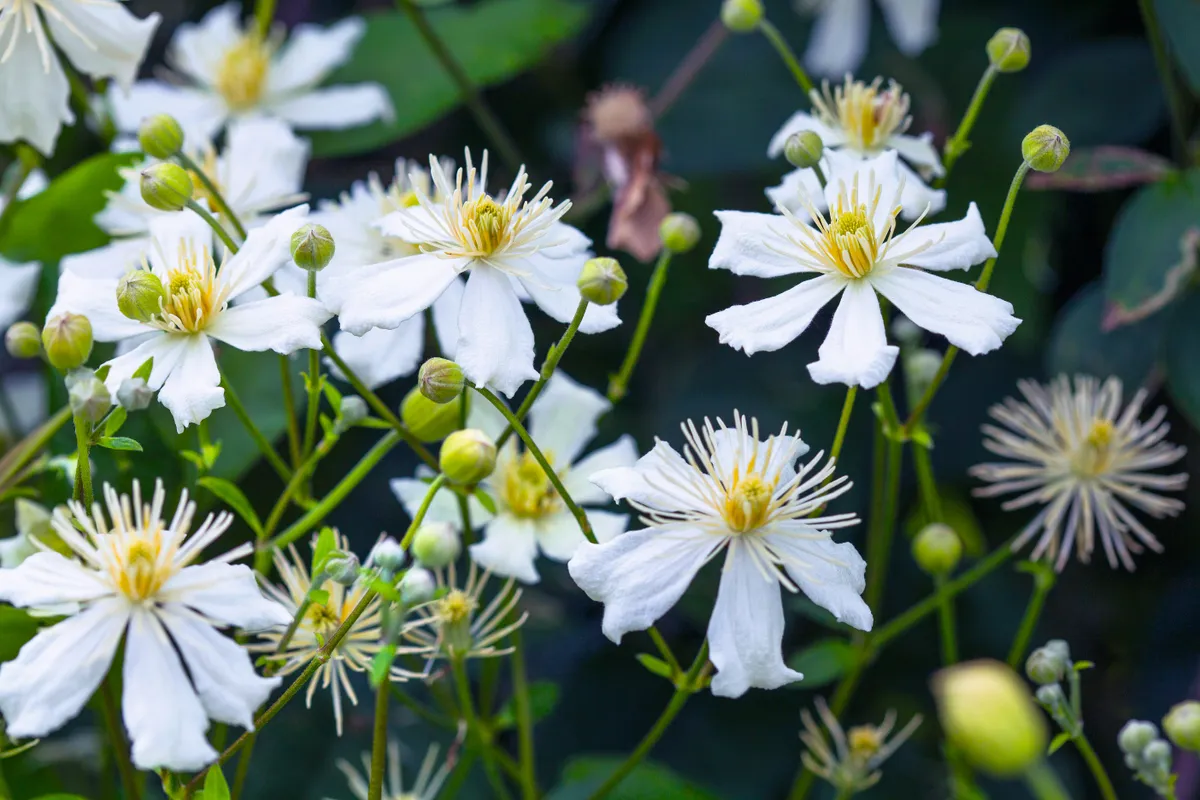
Wide-open, scented flowers, 5cm across, on a plant that can climb to a great height, so very useful for long fence runs or sending into trees. Height: 4-8m. RHS H7, USDA 3a-9b.
Where to buy late-season clematis
Hawthornes Nursery
Marsh Road, Hesketh Bank, Nr Preston, Lancashire PR4 6XT.
Tel 01772 812379, hawthornes-nursery.co.uk
Taylors Clematis
Sutton Road, Sutton, Askern, Doncaster, South Yorkshire DN69JZ.
Tel 01302 700716, taylorsclematis.co.uk Visitors by appointment only.
Thorncroft Clematis
The Lings, Reymerston, Norwich, Norfolk NR9 4QG.
Tel 01953 850407, thorncroftclematis.co.uk